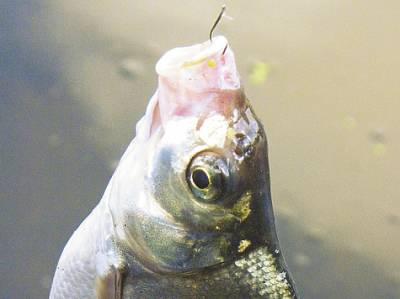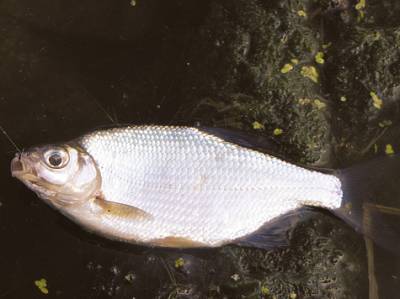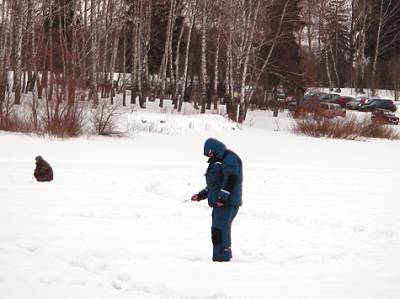
Most anglers opt for specific types and sizes of hooks, to which they are accustomed. At the same time, without hesitation, use the same hooks in all cases. The explanation is simple: angler catches mainly or any particular fish, like bream on a certain bait, e.g. worms, or catch anything that will bite on anything that comes to hand.
The vast majority of cases, used hooks of two classic forms — semicircular bend and “Kirby”. In third place are the hooks called cyprinids, made of thick wire with a short shank and the inner bend of the forehead and the sting of the hook. When choosing the hook, anglers focus on its strength, which almost always leads to unnecessarily large and powerful model. By the way, the larger hooks are easier to unfold due to the longer arm with the same wire thickness.
The range of shapes of hooks is very wide due to the creation of specialized models for high-speed fishing, fishing for very wary fish to boilies, pelets for the moth, for very soft bait to snag seats for very large fish, for flies and streamers for sea fishing. Therefore, gradually appeared “contrived”, but convenient for sale form of the demise of a particular type of hooks. This assignment hooks of the names of some fish — bream, roach, carp and so on.
Seemingly simple, but fundamentally wrong. Focusing on this approach, the angler will never choose the right hook for the specific conditions of fishing. For example, you catch a carp in the summer with worms, dough, bread, corn, with relatively large hooks, and in the fall the fish begins to bite only on the moth, which is on a hook not to impose. And Fisher instead of having to tie another hook, just stops to catch carp, and this is no joke, since I myself, and many others bloodworms, listened to the words that bloodworms angler on the hook to spread can not. When I offered any hook, angler skeptical noticed that these hooks do not catch carp. And this despite the fact that I’m on his eyes catching carp one after the other. Along the way, there is another question: what, in Karasino hook and bream are not caught?
Hook size is determined solely by the size of the bait. First, select a bait, and it is the hook. If you catch on the moth, the maximum hook size 16, if you are using maggots, then take the hook size to # 14. For the worm are more suitable hooks № 6-10. For the bark No. 10-14, caddis and No. 8-14. For the crust of bread suitable hooks № 14-18, and “mash” 14-16, canned corn — 6-8.
I assure you, “output” bream 2-3 kilos on the hook No. 16 to 18 is not particularly difficult. Practice shows that the hook is just the right size punches lip bream and gatherings don’t just happen. The larger the hook is catchy, but does not hit the lip, the lip during the fight with the fish off.
A “fear” of small hooks, even in cases when they understand their necessity. Somehow, these anglers believe that more than the hook, the less likely that it will break. Yes, the larger the hook from thicker wire is stronger than the smaller ones. However, when the hook clings to the fish, hooked and starts to bend, the difference in absolute strength is leveled, because of the smaller hook on the lever extension less.
The strength depends on the thickness and quality of wire. Again, the thinner the wire, the more natural it will behave the bait on the hook, and its appearance is a determining factor of success.
Problems with the strength of the hook occur only during fishing flight float rod for large fish due to the limited capacity of the gear. The plug is an attenuator that allows you to catch, for example, three to five pound carp on the line of 0.16. In the feeder, Bolognese and match tackle the role of the shock absorber performs the clutch coil.
The widest distribution has received primitive tackle, consisting of rods with rings and coil in the cheapest option. The quality of the used coils is that they perform only the function of storing the fishing line. Anglers have even thought not to use the clutch. As a result a line with a thick rope and a hook to tow a car. To make a tackle effective, just replace the coil very cheap for a decent, modulating type clutch.
When choosing a hook, you should know that there are hooks that during the liberation from the “dead” hook broken, and there are hooks that straighten. To argue which is better makes no sense, because everything depends on the situation. But more recently, the hooks of the special resonance of steel that are folded, but then return, like a spring, to its original state.
And I would like to draw attention to one parameter that is never mentioned and rarely discussed. This is the own weight of the hook. If the hook is small in size, and the bait is heavy, this parameter does not play a significant role. But if the lure is small and light and the fish very careful, it is in some cases worth thinking about. Such cases are not as rare as the practice of fishing.
As an example, the option of fishing for bream in “gluhozime” using a fine float snap. During a very careful bite, in the absence of flow or very low flow, the snap-in is used, in which the leash extends up to a meter. This is done in order to play the bait. Periodically, the fisherman quickly raises the rod and quickly returns it to its original place. The bait on a long leash hangs in the water and very slowly lowered. That is, the implemented transaction “drop bait”. In order to fool big fish, use fishing line diameter of 0.08-0.09 mm as bait — one or two larvae of bloodworms. In this case, the own weight of the hook can be a very important factor that will depend on how naturally “sinking” bait. If the bite is not the most stealthy, it’s much easier — take a thicker line, which is its resistance slows the fall of the lure.
Approximately the same thing happens when fishing extremely picky of roach or perch in the hot weather in mid-summer. If the bait used a single larva of the moth, the weight of the hook becomes extremely important. Take and compare the weight with some suitable form and size to the bloodworm hooks are very well known Japanese firm. Hook No. 20 series Sode weighs 4,1 mg, Chinta weighs 4.8 mg, from the Match tournament weighs 4.8 mg, Kisu-k weighs 11.3 mg, Sirahae weighs to 4.4 mg. Feel the difference?
The larva of a large moth in the air weighs about 35 mg. Since the density of the moth is very close to the density of water, the weight of larvae in the water does not exceed approximately 3 mg, which is comparable with the weight of the hook. If to recollect, that very often the fish takes only one larva, and the larvae of the second infusion immediately leads to the cessation of bites, then the above arguments are very similar to the truth. Should be noted that the findings are confirmed in practice. You should replace the hook of thick wire on the light of the thin wire, and bite immediately become more faithful. No wonder sports hooks for float fishing bleak, roach and perch made of thin wire.
Practice shows that the parameters of the size and weight of the hook plays a much more important role than the shape and color. By the way, about the color. Favorite some anglers red “moralnye” hooks with long fore-end are terms of effective transactions on a drop bait, the most unsuitable for the moth. They are not only relatively heavy, but usually a little less acute. In addition, the lacquer gets off the hook during the first fishing. All of the above, of course, applies only to the neat fishing on thin snap-cautious fish.








